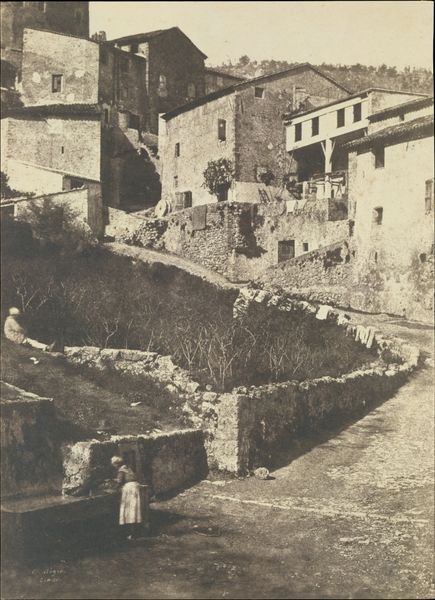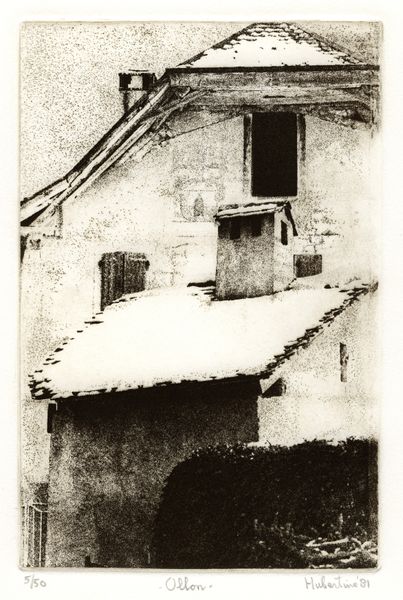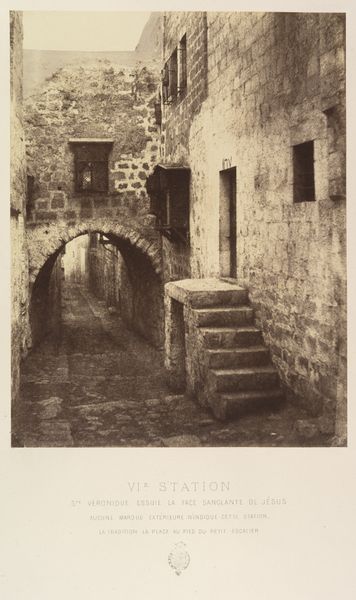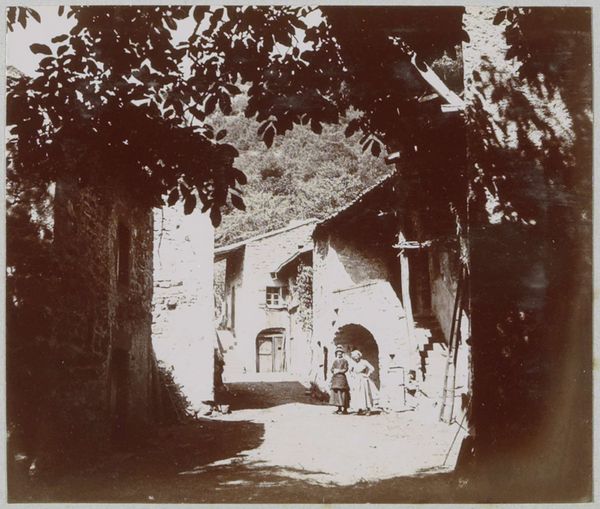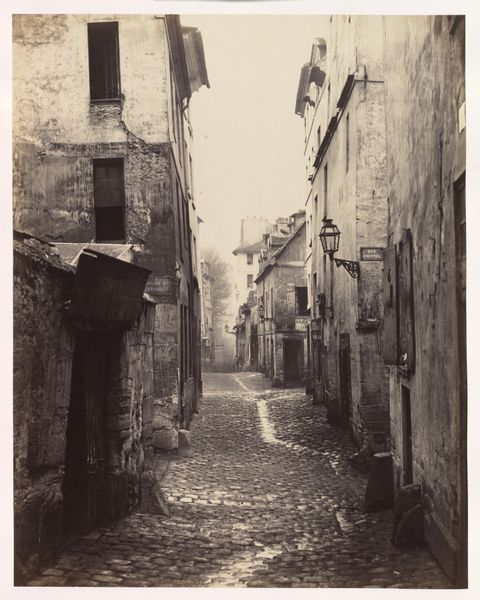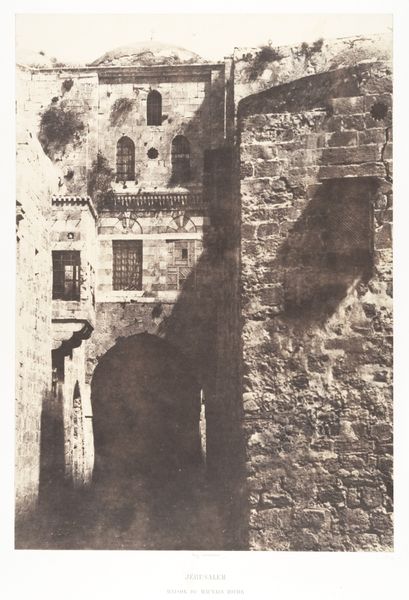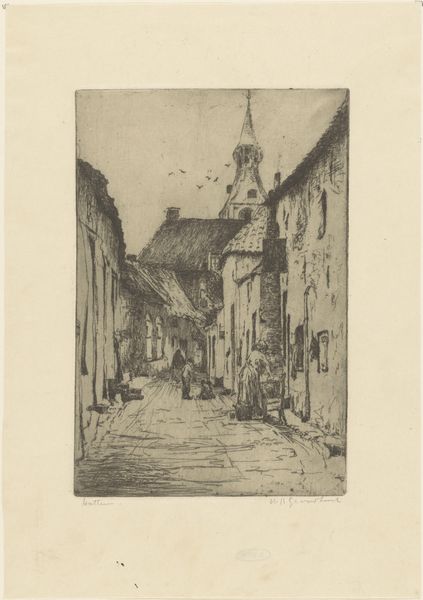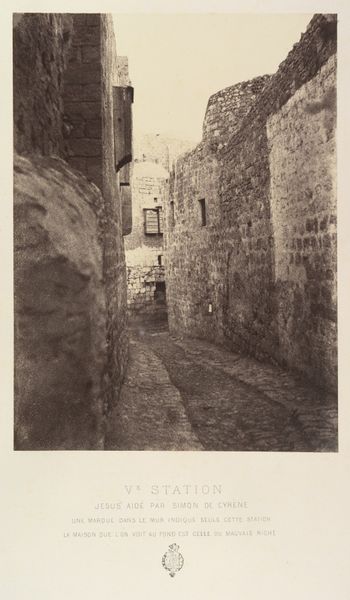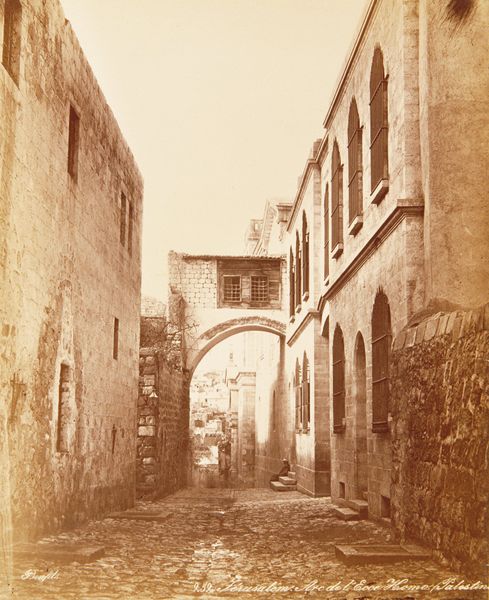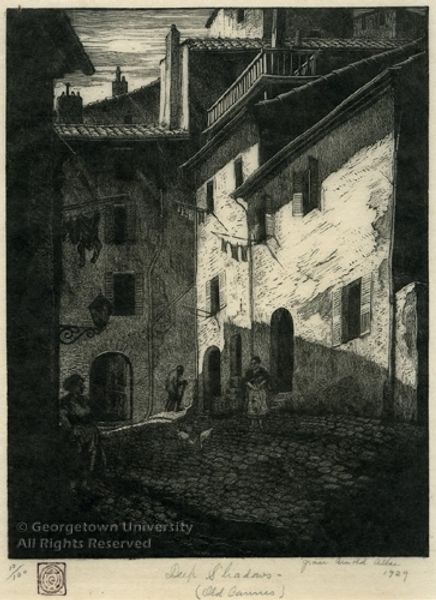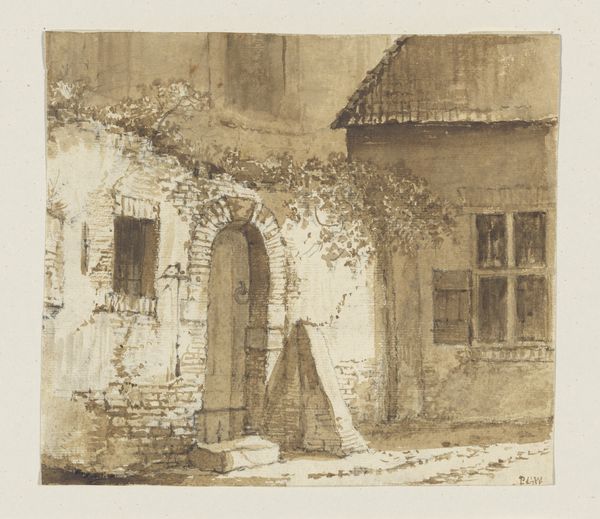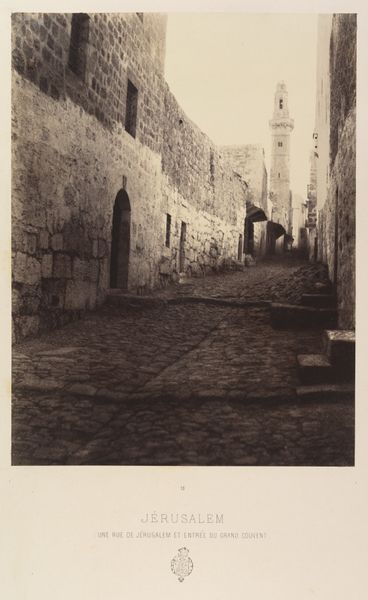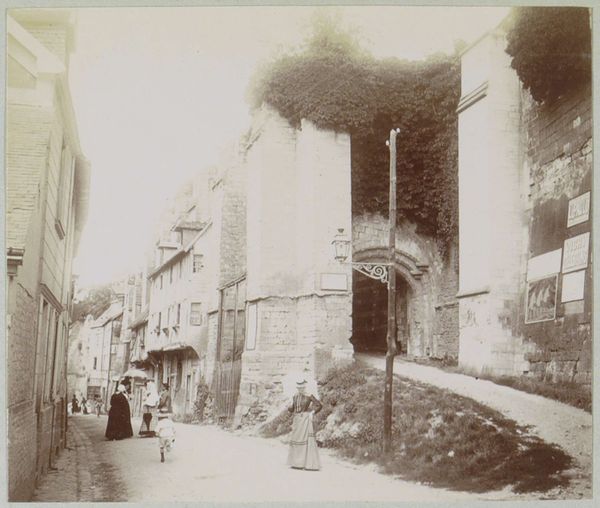
print, photography
#
pictorialism
# print
#
impressionism
#
landscape
#
street-photography
#
photography
#
united-states
#
cityscape
Dimensions: 21.7 × 15.7 cm (image/paper); 22.3 × 16.2 (secondary support); 50.3 × 32.4 cm (original window mat)
Copyright: Public Domain
Curator: Right, so here we have Alfred Stieglitz's 1890 photograph, "A Street in Sterzing, The Tyrol", currently residing at The Art Institute of Chicago. It's a print, showcasing his early experimentation with pictorialism. What strikes you about it initially? Editor: Bleakness. Almost oppressive. The way those buildings crowd in...it feels less like a street, more like a…chute. And the light, bleached and unforgiving. Is it me, or does the whole scene seem to exhale a sense of stifled existence? Curator: That feeling is quite palpable, isn’t it? Remember that late 19th-century urban photography was frequently employed as social commentary. But here, Stieglitz moves beyond stark documentation, manipulating tones and focus to evoke atmosphere, reflecting the sentiments of rapid urbanization across Europe. Editor: So, it's not *just* a street. It’s a mood. The way he softens the details, blurs the edges…it’s almost like memory, faded and melancholic. You can practically hear the silence resonating from the cobblestones. And look at that spire, almost ghostly in the background. There is tension between an established religion, old decaying walls and cramped-up living. Curator: Precisely! This aesthetic alignment places the image within the broader Pictorialist movement, seeking photography’s acceptance as fine art. Through techniques like soft focus and careful tonal adjustments, Stieglitz moved photography away from purely documenting reality. Editor: So, this is intentional. All those subdued grays are actually aiming for *art*? How ironic. Considering it looks so realistically oppressive. And I like how he plays with depth of field, leading your eye down that shadowed path… towards, well, more shadows. It gives a sense of impending doom, of the unknown always looming right around the corner. But does that suggest a deliberate, socially aware comment? Curator: His motivations were diverse. There’s the pursuit of artistic expression, a yearning for photography to be considered on par with painting and sculpture. Simultaneously, his documentation captured elements of urban life that spurred thought-provoking discourses in rapidly changing cultural landscapes. "A Street in Sterzing" captures a nuanced moment – the weight of history against the precipice of modernization. Editor: I think seeing that through his lens definitely softens my first impression, making it resonate that much deeper. Curator: Mine, too. Thank you for contributing to such an intimate portrait, a real treasure.
Comments
No comments
Be the first to comment and join the conversation on the ultimate creative platform.
